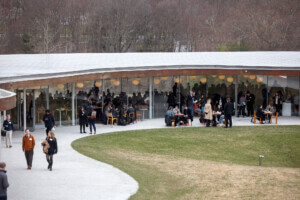[Editor’s note: After publication, the AIA informed AN that the Framework for Design Excellence, including its AIA 2030 Commitment section on net-zero energy use, became the standard measure for jury consideration across all awards in 2019. However, a commitment to net-zero energy usage is not a necessary requirement for projects to win, which Heinfeld is arguing for below as a way to incentivize a quicker transition. We apologize for any earlier confusion.
An AIA spokesperson clarified further: “While requiring performance reporting and data is a worthy goal, additional requirements may have unintended consequences. The AIA is currently looking at how more stringent requirements could disproportionately impact smaller firms participation as well as the diversity of applicants.”]
Of the American Institute of Architects (AIA) major annual awards, the COTE Top Ten is unique in that it links design excellence and the building’s energy performance. Entries are judged by the Framework for Design Excellence, which includes wellness, conservation, and energy as key standards.
The COTE’s unique status raises a question: Why isn’t energy performance given more importance as a central part of the criteria for any AIA award? The AIA has rightfully proclaimed that climate change is the most pressing issue of our generation. If that’s the case, then energy performance and conservation should be at the core of any evaluation of whether or not a design is worthy of an honor.
The AIA already has the standard by which to judge the energy performance of projects: The AIA 2030 Commitment. The AIA supports the challenge, which calls for buildings to be net-zero by 2030 to “transform the practice of architecture in a way that is holistic, firm-wide, project based, and data-driven.”
The AIA should take this opportunity to make reporting performance data and participation in the 2030 Commitment a prerequisite to winning a non-COTE national award. Taking this basic step would merge the goals of the AIA’s climate change initiatives and make it clear that the industry is united behind the 2030 Commitment.
To its credit, the AIA has been taking steps to make the 2030 Commitment a core part of its agenda. Earlier this year, the AIA’s Large Firm Roundtable published a “Countdown on Carbon” policy, requiring members to sign on to the 2030 Commitment. But it doesn’t go far enough. It doesn’t even require that firms actually report their numbers. Of the more than 600 firms that signed on to the pledge, only 252 reported data last year.
The COTE is a good example of the current disconnect. Entrants must be signatories to the 2030 Commitment, but they don’t have to actually report results or hit the benchmarks. Fewer than 55 percent of the COTE winners from 2016 to 2020 met the current 2030 Commitment target of a 70 percent energy reduction.
True, energy is part of the Framework for Design used to judge design excellence for the COTE program. But if the 2030 Commitment is going to have any relevance with the profession, making the energy efficiency benchmarks a requirement for a non-COTE award would send a powerful message in the AEC industry.
For any award, we are looking for projects that inspire us and add to the conversation about our beliefs. Juries should be able to make awards based on their collective thoughts on excellence. But including the 2030 Commitment will provide a level of standards and guidance. We want to reward projects that contribute to our society and add value to our lives. Award programs are essential to recognize the best work; we should always be looking for examples that spotlight achievement. When a project wins a prestigious national award, even though it doesn’t come close to meeting the 2030 Commitment, it sends the wrong message.
I expect so much more from our industry when we hold up projects as examples. As an industry, we need to recognize that there is no separation between design excellence and performance.
Energy efficiency is a catalyst for good design. A focus on solving the energy issue leads design teams to embrace passive conservation measures and explore every element of a design. It forces architects to be “holistic, firm-wide, project based, and data-driven,” as the AIA says in its 2030 marketing materials.
The 2030 Commitment can no longer be aspirational. It needs to be an integral part of the design industry. And that starts with putting our beliefs into practice. That is why last year we started publishing EUIs and our 2030 Commitment results with every project. We designed our integrated practice, in large part, to better address the performance challenges.
We either believe that our industry can be an agent of change or not. I believe architects can lead the way. We have set the bar; it’s up to us to make it the measure of success.
Dan Heinfeld is president of LPA Design Studios, the largest firm to meet the AIA 2030 Commitment target for energy reduction the last two years and a recipient of a 2020 National COTE Top Ten Plus award.











